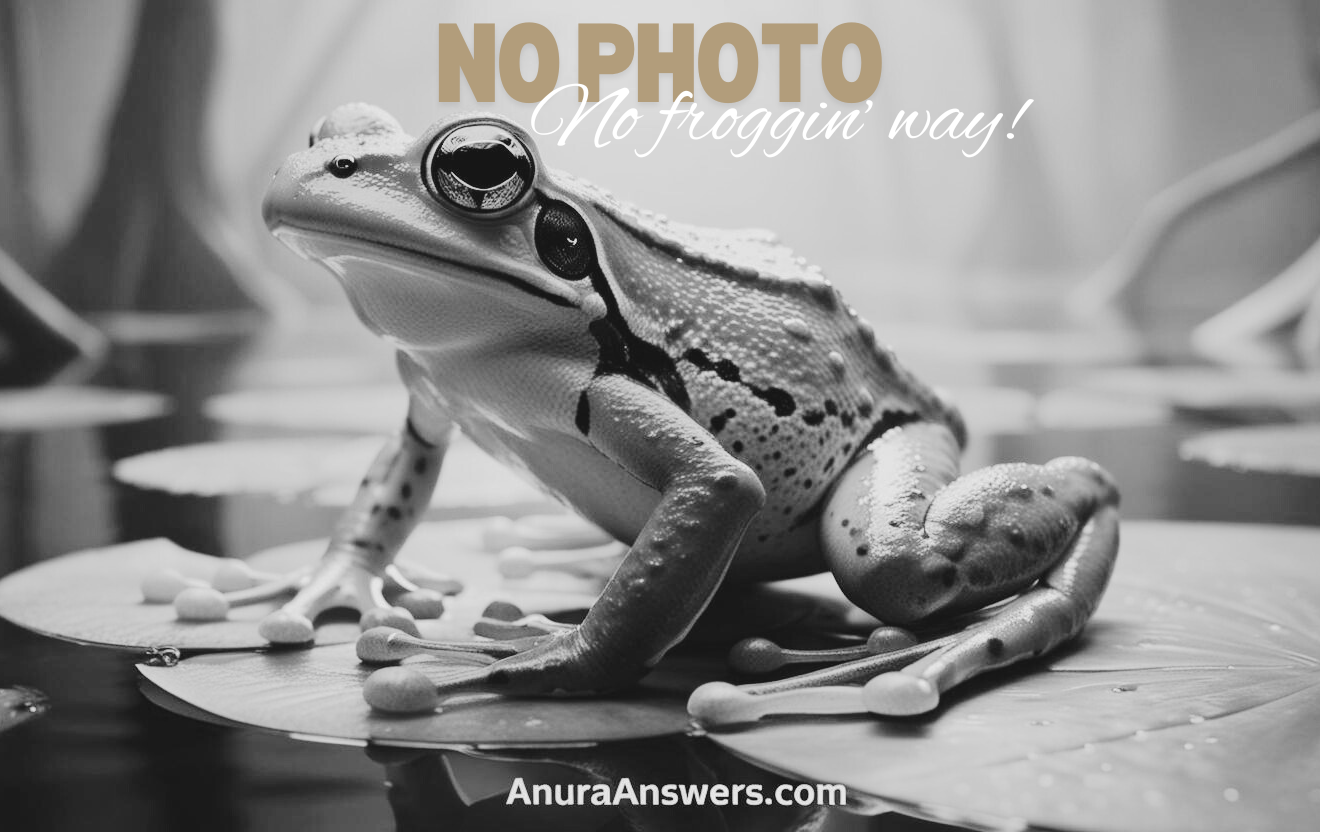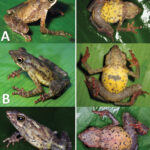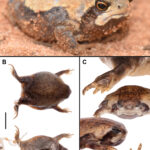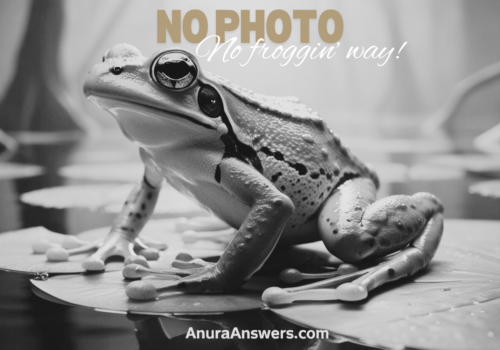- Exploring the Secretive Life of Atelopus farci: Colombia’s Endangered Harlequin Toad
Exploring the Secretive Life of Atelopus farci: Colombia’s Endangered Harlequin Toad#
Hidden beneath the vibrant green forests of Colombia, a small jewel lives quietly by clear mountain streams, brightly colored yet remarkably elusive—the rare Atelopus farci. Its vivid coloration—often described as a living canvas painted in bold black, yellow, and green patterns—has enchanted biologists and conservationists alike. Officially described by Lynch in 1993, Atelopus farci is part of a fascinating family of amphibians colloquially known as harlequin toads, famed for their striking appearance and sensitivity to environmental changes. Yet, even among its captivating cousins, Atelopus farci is distinctive for its particularly vulnerable status, a silent sentinel warning of ecological imbalance and environmental stress.
Amphibians have long offered humans a glimpse into the health of Earth’s natural systems. Their permeable skin, delicate reproductive cycles, and close ties to water sources make them uniquely sensitive indicators of environmental conditions. Among these ecological “canaries in the coal mine,” Atelopus farci signals critical information about the well-being of Colombia’s unique montane ecosystems. Sadly, today the vibrant colors that evolved as a brilliant advertisement to predators of poison and distastefulness also underscore the critical conservation challenges this frog faces. Habitat loss, disease, and climate change all converge as threats to the survival of this species. Understanding the fascinating life story of Atelopus farci is not only intriguing—it is crucial to ensuring its continued existence.
Taxonomy and Classification#
The scientific classification places Atelopus farci within the family Bufonidae, commonly known as “true toads.” However, unlike the stereotypical brown, warty toads, species within the genus Atelopus defy expectations with vibrant coloration and smoother, less granular skin. The genus Atelopus, known as harlequin toads, comprises over ninety described species, most of which reside in Central and South America. Many of these species exhibit vivid coloration serving as aposematic signals—evolutionarily developed warnings to would-be predators regarding their potent chemical defenses.
The specific epithet “farci” honors the Revolutionary Armed Forces of Colombia (FARC), as the region where this species was first discovered had historically been heavily impacted and, paradoxically, protected by armed conflict. These remote areas have remained relatively untouched by encroaching human activities, preserving pockets of pristine forest ideal for sensitive species like Atelopus farci.
Natural Habitat#
Geographic Range and Ecosystems#
Atelopus farci is endemic to the Andean foothills of Colombia, particularly in the cloud forest habitats of central Colombia, primarily confined to very restricted elevational ranges. These frogs inhabit a unique ecological niche, favoring moist, montane environments characterized by dense cover of mosses, bromeliads, and leafy vegetation. Flowing mountain streams with clear, cool water are essential components of their habitat, offering the moisture and microclimates necessary for their complex breeding strategies and high humidity requirements.
Forest Floor Dwellers#
Unlike tree-dwelling frogs, Atelopus farci is largely terrestrial, thriving amongst leaf litter, stones, and fallen logs on the forest floor. These frogs are dependent upon pristine streams for breeding, alongside small pools and puddles filled by frequent rainfall and forest condensation. This reliance on specialized and pristine habitats makes the species exceptionally susceptible to environmental disturbances. Thus, areas impacted by deforestation, pollution, or climate shifts drastically reduce suitable habitats, isolating populations and fragmenting their limited range.
Physical Characteristics#
A Living Work of Art#
Atelopus farci’s striking physique is an impressive display of natural creativity. Adults typically measure between 2 to 5 centimeters in length, making it a relatively small frog. Despite its compact size, its vibrant coloration commands attention. The color palette of Atelopus farci is a brilliant composition of black or dark green hues overlaid with contrasting bright yellow or golden markings. Each individual frog carries a unique pattern of stripes, blotches, or speckles, much like human fingerprints, setting each specimen apart as a distinct entity.
Adaptations for Survival#
Their bright colors are not simply ornamental; these frogs exhibit strong aposematism to warn predators of potent skin toxins they secrete as an effective defense. The smooth skin of harlequin toads contains glands secreting alkaloids potent enough to discourage predators from making them a meal. The bright coloration advertises this chemical defense, serving as a crucial adaptation protecting Atelopus farci from myriad would-be predators in lush cloud forests—among them birds, snakes, and small mammals.
Behavior and Life Cycle#
Feeding and Activity Patterns#
Atelopus farci spends much of the daylight hours hidden, emerging at dusk and dawn to forage amid leaf litter and vegetation. Their diet primarily consists of insects and other small arthropods such as ants, beetles, spiders, and mites that thrive within their habitat. Their feeding strategy relies on precision over speed—a sharp eye, patient stalking, and a quick darting tongue capturing prey with high efficiency.
Breeding Rituals and Communication#
Breeding season for these harlequin toads coincides with heavy rains, a cycle that beckons males from their secluded territories to congregate near streams to call for females. Walking through the wet understory during breeding season, a careful observer might catch the quiet yet distinctive chirping chorus of male Atelopus farci. These amorous calls serve an essential role in attracting females and warding off competing males.
Once paired, females deposit egg strands precisely along rocky stream beds or vegetation close to running water. These gelatinous egg masses mature and release tiny tadpoles into rapidly flowing streams, where larvae must quickly adapt to the currents and predator-rich waters until their metamorphosis into adult frogs. Tadpoles of Atelopus farci exhibit specialized mouthparts adapted to grazing fine algae from underwater stones. Survival through tadpole stage is precarious, dictated by precise temperature and water purity—another factor placing this delicate amphibian in jeopardy from human environmental disruption.
Ecological Role#
Guardians of Stream Ecosystems#
Atelopus farci, like other amphibians, serves an integral ecological function as both predator and prey within its ecosystem. They control insect populations, playing a subtle yet critical role in balancing forest health by reducing pest insects. Additionally, as a prey species for various birds and snakes adapted to resist their toxins, these frogs support the biodiversity critical to healthy forest ecosystems.
A Vital Ecological Indicator#
The species’ sensitivity to environmental changes makes it invaluable as indicators of ecosystem health. A sudden decline in Atelopus farci’s population signals disturbance, often unseen by humans until it is tragically advanced, such as water contamination, habitat alterations, or insidious climate shifts.
Threats and Conservation Status#
A Species Under Pressure#
Atelopus farci currently faces numerous threats leading to significant population declines. Habitat loss stemming from agriculture, forestry, and mining operations encroach rapidly upon their habitats. Climate change exacerbates these problems, altering rainfall patterns crucial for breeding and survival.
Furthermore, the spread of the fungus Batrachochytrium dendrobatidis, commonly known as chytrid fungus, has swept through amphibian populations worldwide, devastating many Atelopus species. Without intervention, Atelopus farci stands to mirror the fate of its many harlequin relatives now on the edge of extinction.
Ongoing Conservation Efforts#
Currently listed as Critically Endangered by the IUCN, conservationists are increasingly recognizing the urgency of sustained protection and targeted management. Local efforts include habitat preservation projects, captive breeding programs, and extensive environmental education and outreach try to rally communities behind the conservation cause.
Cultural and Scientific Significance#
Symbolically, Atelopus farci represents a fragile yet resilient ecological heritage in Colombia. For conservation advocates, it embodies hope, adaptability, and the critical importance of biodiversity conservation. Scientifically, the species provides insights into toxin chemistry, adaptation, disease resistance, and ecological monitoring—knowledge that profoundly benefits wider biodiversity conservation efforts.
Conclusion: Safeguarding Colombia’s Amphibian Jewel#
In preserving Atelopus farci, we guard far more than a single species. We protect whole ecosystems, uphold biodiversity, and maintain vital environmental health. Conservation demands collective advocacy, education, meaningful habitat restoration, and consistent scientific inquiry. To secure the wondrous existence of Atelopus farci, our collective voice must rise together, nurturing the bonds between humans, wildlife, and the habitats upon which we all depend.







